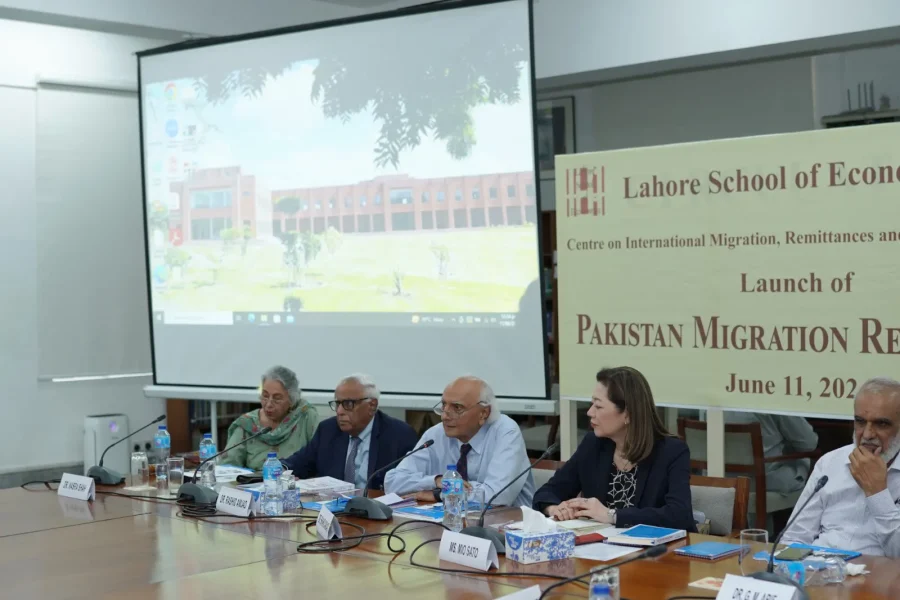The Pakistan Migration Report 2024, third in the series published biennially by the Centre on Migration, Remittances and Diaspora (CIMRAD), Lahore School of Economics, was launched on June 11, 2024. Ms. Mio Sato, Chief of Mission, IOM Pakistan was the Chief Guest at the launch event. The ceremony was held at Lahore School of Economics, Burki campus. Dr Shahid Amjad chaudhry, Rector Lahore School of Economics opened the proceedings of the ceremony. The 2024 report reveals that the international out migration numbers have returned to pre-Covid peak levels. The outward migration plummeted from 625,000 in 2019 to less than 300,000 during 2021, but surged to 862,000 by 2023 as the pandemic’s effects waned. A significant portion of workers continue to migrate to Gulf countries, with Saudi Arabia retaining its position as the top destination, attracting half of all migrants. However, the report notes that around half of Pakistani labor migrants are still categorized as low-skilled or unskilled, despite a shrinking demand for such workers in Saudi Arabia.
On the other hand, the UAE experienced, in the post Covid period, a notable increase in migrant inflows, rising to 27%.The report also points out low level of women representation in the international labour force migration as just 0.94% of the total. Contrary to the media hype of the unprecedented “brain drain”, the report cautions that the exodus of the highly skilled and the highly qualified professionals is a misinterpretation of the official data. The percentage of highly qualified/skilled out-migrants has remained less than 10 % of all registered migrants for most of Pakistan’s migration history since 1971.
Furthermore, irregular migration remains a concern, especially in Europe in 2022, making Pakistan one of the top ten nationalities entering Europe illegally. Only 15% of Pakistani asylum applications succeed, and 14.3% of repatriation orders were executed in 2021. According to the report, the trend in officially recorded remittance inflows contradicts those ofmigration, signifying the use of unofficial channels to send money. The primary factor influencing theremitter’s choice of medium was the exchange rate gap between the official and market rate. ByJanuary 2023, the gap was estimated to be around 4 percent which meant that families of remittersusing unofficial channels were receiving a higher PKR amount. This was reflected in the 12.6 percent decline in remittances during 2022-2023.
The trend in 2023-2024 (July-May) has remained passive. Thereport recommends that given the importance of remittances as a key source of foreign exchange providing the necessary buffer against the country’s persistent trade deficit, they merit dueconsideration in exchange rate policy decisions. The report also discusses the role of Roshan Digital Account (RDA) in leveraging diaspora savings formobilizing investment in the country. The repatriated amount from these accounts as a proportion oftotal inflows increased from 2.4 in 2020-2021 to 37.7 percent 2022-2023.










